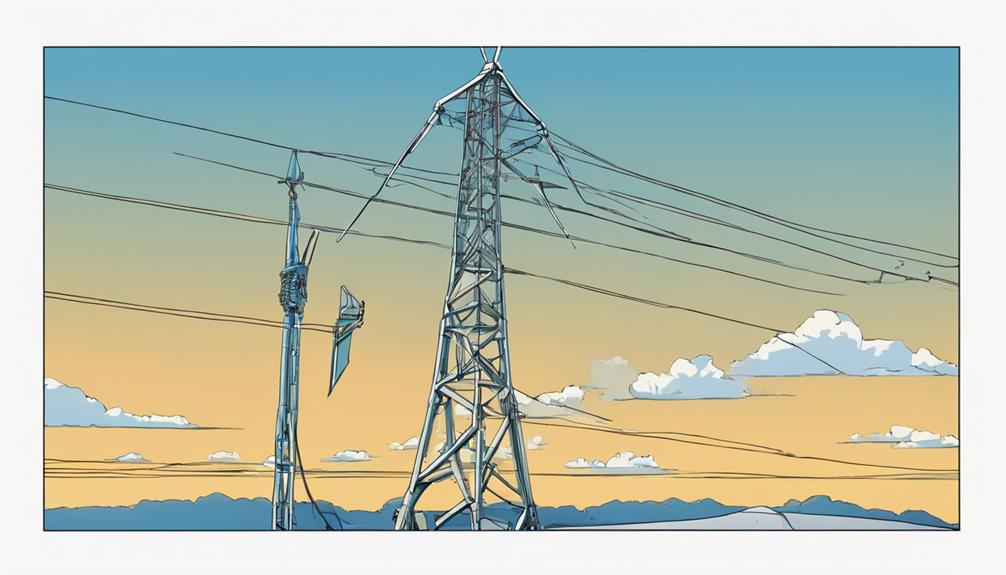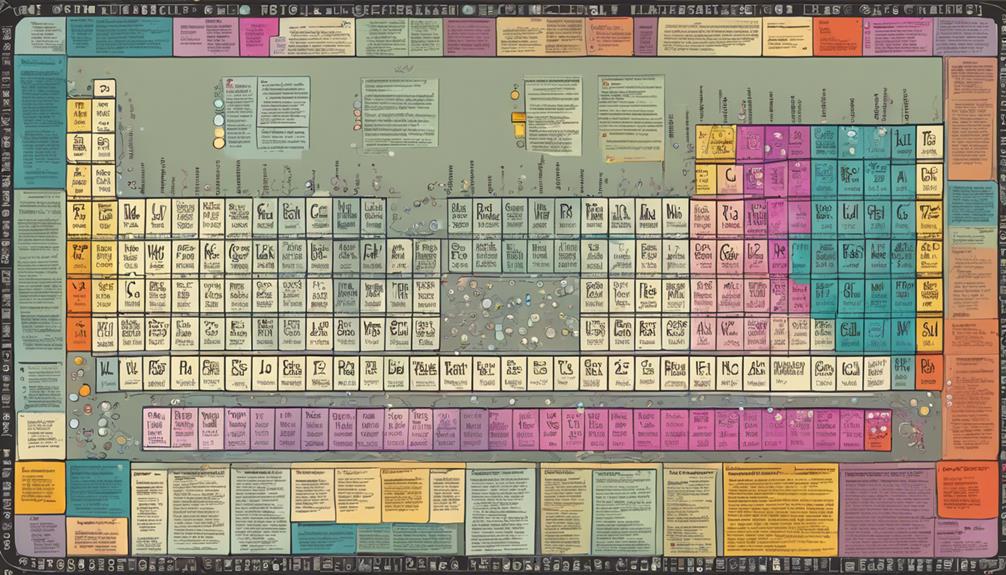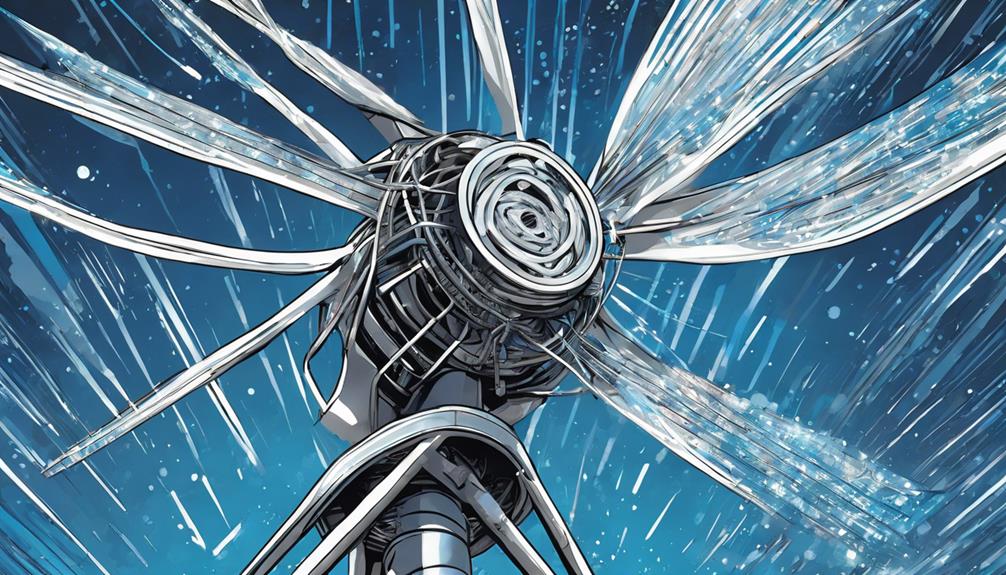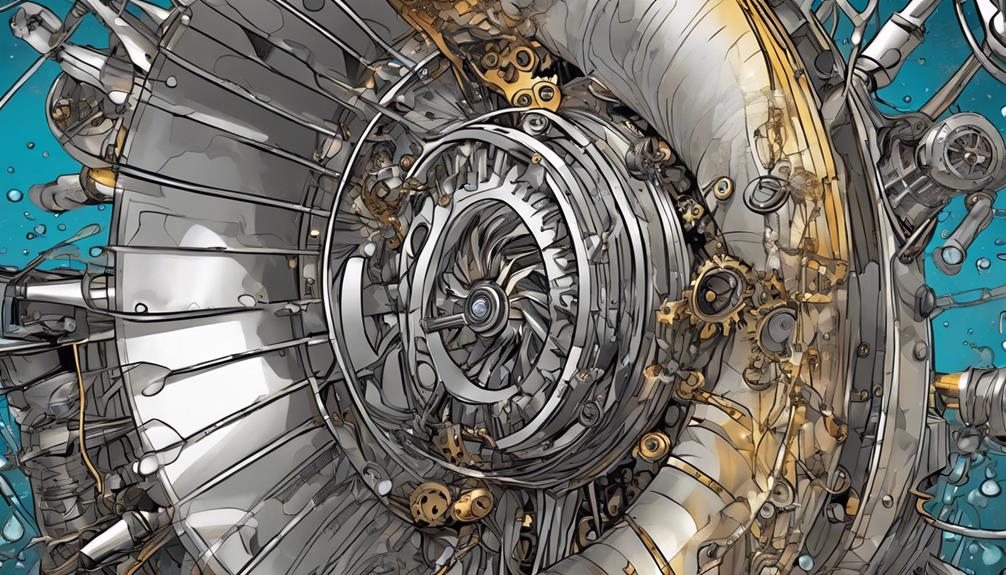To build a tilt-up guyed tower for your 1 kW wind turbine, you'll need to ponder factors like tower design, materials, and construction process. Guyed towers are cost-efficient, but prices range from $500 to $5000, depending on the supplier or manufacturer. You'll also need to budget for installation, labor, and permits. Additionally, contemplate maintenance and repair costs over the tower's lifespan. For an accurate quote, consult with suppliers or manufacturers. As you weigh your options, keep in mind that a well-planned project can save you money in the long run – and there's more to explore to get your project off the ground. When considering the design of your tilt-up guyed tower, it’s important to take into account the environmental factors of your location and the potential impact on nearby wildlife. In addition to the cost savings and efficiency of a guyed tower, the advantages of wind farms include reducing greenhouse gas emissions, creating jobs in the renewable energy sector, and contributing to energy independence. By carefully evaluating all aspects of the project, you can ensure a successful and sustainable wind turbine installation.
Key Takeaways
- A 1 kW wind turbine tower's cost ranges from $500 to $5000, with additional installation and maintenance expenses.
- The tilt-up guyed tower design is a cost-efficient option, but quotes from suppliers or manufacturers are necessary for accurate pricing.
- Tower height, material, and location impact pricing, with taller towers and remote locations increasing costs.
- A stable foundation and proper installation are crucial to ensure the tower's longevity and minimize maintenance costs.
- Regular maintenance and inspections are essential to extend the lifespan of the tower and prevent costly repairs.
Determining the Cost Factors
When constructing a tilt-up guyed tower for a 1 kW wind turbine, you'll need to weigh multiple key cost factors that can greatly impact your project's budget. The type of foundation required, such as concrete or guy wires, will significantly influence the overall cost of the tower construction.
You'll need to take into account the cost of materials, labor, and permits, as well as installation costs. Location plays an important role in determining costs, as accessibility, transportation, and local regulations can affect the project budget.
You'll also need to factor in additional expenses, such as equipment rental and maintenance costs, as well as any customization or special features needed for the tower. It's crucial to think about the long-term costs, too.
You'll need to take into account potential maintenance and repair costs over the lifespan of the tilt-up tower to make sure it remains affordable and efficient.
Tower Design and Materials
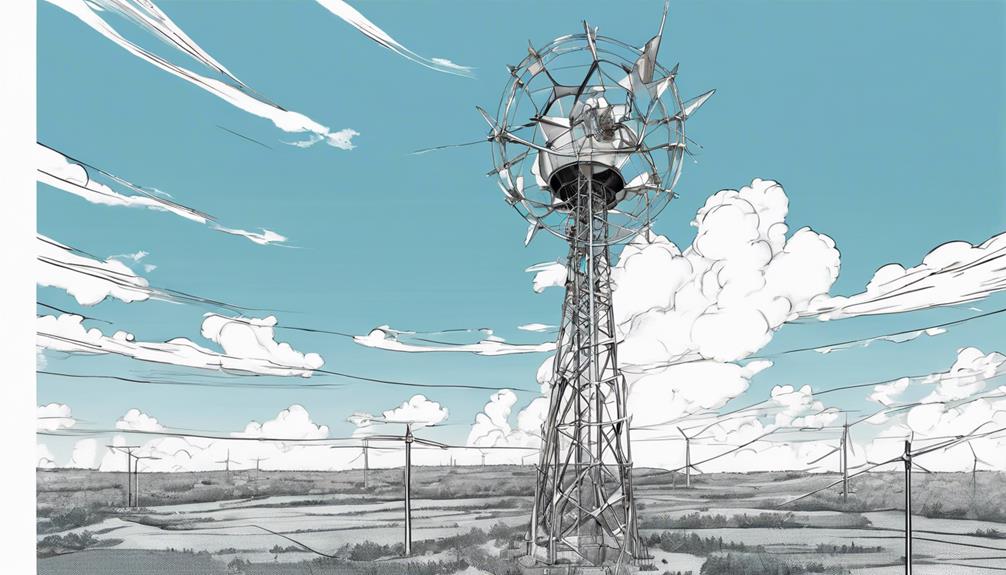
As you've considered the cost factors, you can now focus on designing a tower that will efficiently support your 1 kW wind turbine, and selecting the right materials is a vital step in this process.
For a tower for a wind turbine, you'll want to choose materials that are durable and can withstand harsh weather conditions. Steel or aluminum are popular choices for their strength and resistance to corrosion.
The design of your tower should also include guy wires, which provide stability and support in windy conditions. The location, height, and wind conditions of your tower will also influence the materials you select.
It's crucial to ensure your tower design meets safety standards and regulations to guarantee a safe and functional installation. A well-designed tower is vital for the efficient operation of your 1 kW wind turbine system.
Guyed Tower Construction Process
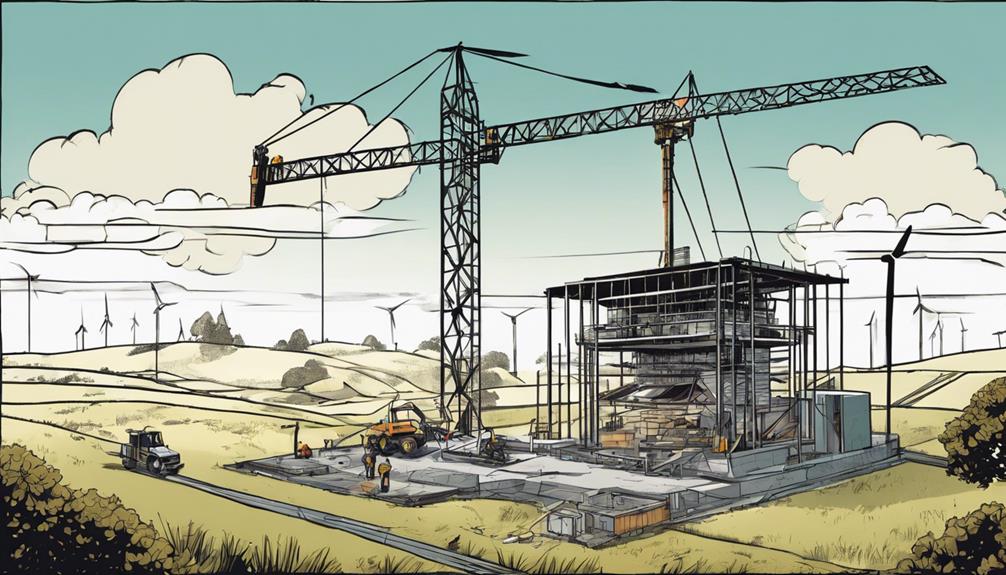
Constructing a guyed tower for your 1 kW wind turbine involves a series of precise steps to establish a secure and stable structure.
You'll start by digging foundation holes for the anchor points, which will provide stability and support to the tower. Next, you'll set the anchor points, making sure they're securely anchored to the ground.
After that, you'll begin assembling the tower sections, using a tilting up tower method to raise the sections into place. This process requires careful planning and execution to guarantee the tower is level and plumb.
As you assemble the sections, you'll also attach the guy wires, which will provide additional stability and support to the tower.
Throughout the construction process, it's crucial to follow safety guidelines and best practices to avoid accidents and ensure a successful installation. By carefully following these steps, you'll be able to construct a sturdy and reliable guyed tower that will support your 1 kW wind turbine and withstand wind loads.
Wind Turbine Installation Considerations
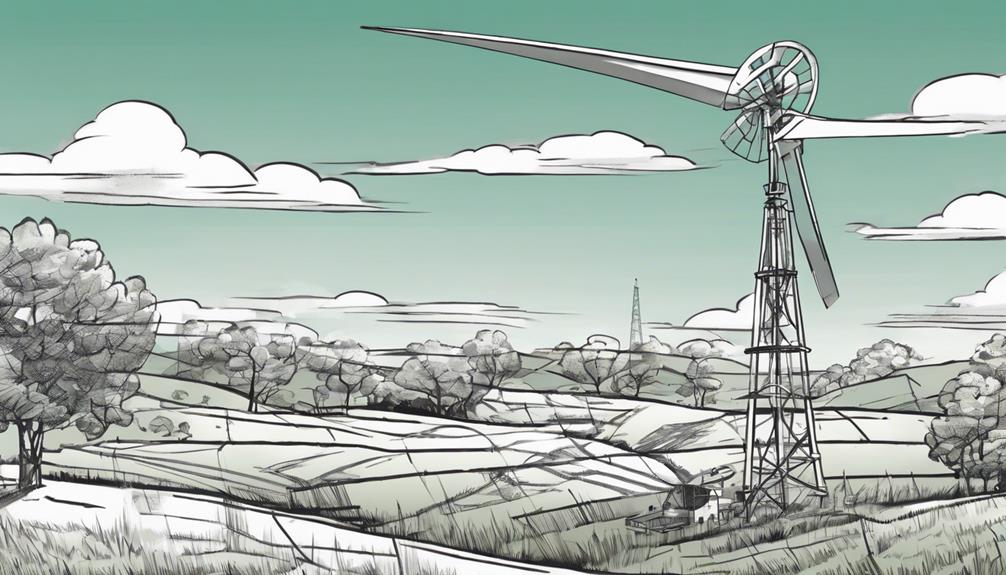
You'll need to carefully weigh several key factors when planning the installation of your 1 kW wind turbine on the guyed tower. One important consideration is the tower's height and material, as a taller steel tower may increase costs.
A stable foundation is also essential, so factor in the cost of construction and make sure it can support the tower's weight. Installation costs, including labor, equipment rental, and permits, should also be accounted for. Don't forget to add transportation expenses for delivering the tower components to the site.
When choosing a wind turbine, consider a wind turbine folding tower, which can be easily assembled and installed on-site. This can help reduce labor costs and simplify the process. Additionally, plan for maintenance and repair costs over the tower's lifespan to guarantee long-term efficiency.
Budgeting for the Project
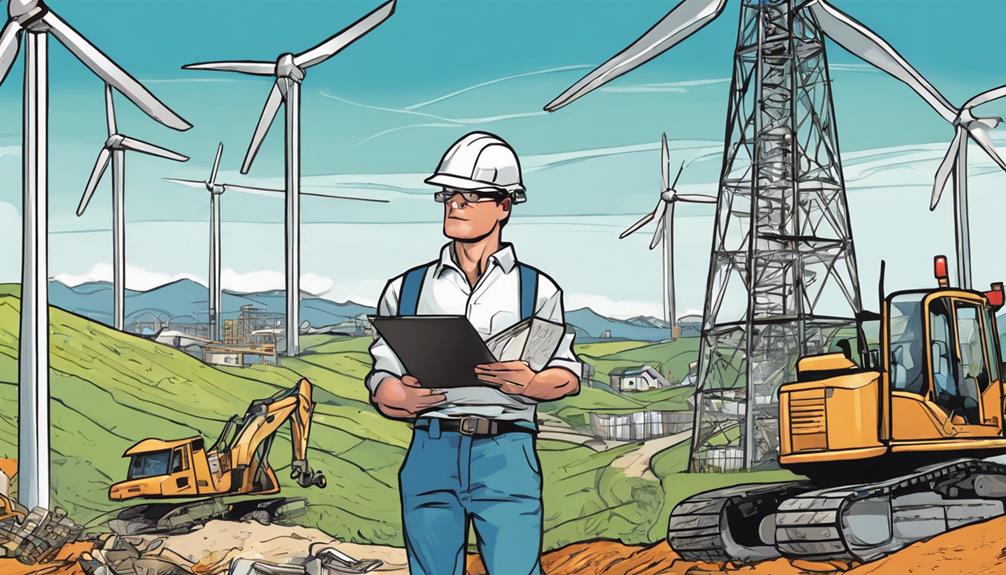
As you start budgeting for your project, you'll need to take into account the costs associated with the turbine tower itself, as well as the equipment expenses that come with it.
You'll want to factor in the cost of materials, labor, and any necessary permits, which can add up quickly.
Turbine Tower Costs
Budgeting for a tilt-up guyed tower for your 1 kW wind turbine project requires careful assessment of various factors that can drive costs up or down, ultimately impacting your overall expenditure. You'll need to think about the tower's height, materials, location, and installation requirements, as these can greatly influence your costs.
For instance, a folding tower design can be more cost-effective than a traditional tower.
Here are some key factors to take into account when budgeting for your turbine tower costs:
- Labor costs: hiring professionals to assemble and install the tower
- Materials: the type and quality of materials used for the tower's structure and foundation
- Permits and inspections: obtaining necessary permits and passing inspections can add to your costs
- Foundation work: preparing the site and laying the foundation for the tower
- Transportation: shipping the tower components to your site can be a substantial expense
Equipment Expenses
Your equipment expenses for constructing a tilt-up guyed tower for a 1 kW wind turbine will likely include costs for vital components like steel, concrete, and guy wires, as well as tools and equipment rentals. These expenses can vary depending on the specific components you need, so researching and comparing prices is necessary to get an accurate estimate.
For example, you may need to rent a crane or excavator to lift and place the tower's heavy components, which can contribute to your equipment expenses. Additionally, you'll need to consider the cost of tools like drills, saws, and wrenches necessary for assembly and installation.
When planning your budget, don't forget to include labor costs for construction, as well as any additional expenses related to the wind turbine folding tower's design and installation. Proper planning and budgeting are vital to ensuring a successful and cost-effective project.
Supplier and Manufacturer Options

You have several supplier and manufacturer options to ponder when constructing a tilt-up guyed tower for your 1 kW wind turbine, including companies like Qingdao HenryD Wind Power Equipment Co., Ltd. This Chinese-based supplier offers a range of tilt-up guyed towers suitable for your project, with heights from 6m to 15m and capacities from 500w to 5kw.
Here are some key points to contemplate when evaluating Qingdao HenryD Wind Power Equipment Co., Ltd:
- They've been in operation for 9 years, giving them adequate experience in the industry.
- Their wind turbine folding tower designs allow for easy installation and maintenance.
- They offer a wide price range, from $150.00 to $35,000.00, to accommodate different budgets.
- You can contact them directly for inquiries, but note that shipping solutions are currently unavailable on Alibaba.com.
- Their towers are designed for wind power generators, making them a suitable option for your 1 kW wind turbine project.
Finalizing the Tower Cost

With a clear understanding of supplier and manufacturer options, determining the final expense of the tower is the next crucial step in bringing your 1 kW wind turbine project to life. You've narrowed down your choices, and now it's time to crunch the numbers.
The cost of constructing a tilt-up guyed tower for a 1 kW wind turbine can vary widely, depending on materials and height requirements. Factors like tower height, material quality, and installation complexity will influence the final cost.
You've got to take into account durability, stability, and local regulations when finalizing the cost of your wind turbine tower project. A folding tower, for instance, might be a more cost-efficient option for you.
Pricing for a 1 kW wind turbine tower typically ranges from $500 to $5000, with additional costs for installation and maintenance. Be sure to consult with suppliers or manufacturers to get accurate quotes and estimates for your specific tower needs.
Frequently Asked Questions
How Much Does a Wind Turbine Tower Cost?
You're wondering how much a wind turbine tower costs – well, it depends! Factors like tower height, materials, and installation complexity impact the price, which can range from $1,000 to $5,000 or more for a 1 kW system.
How Tall Should a Wind Turbine Tower Be?
As you reach for the sky, you wonder how tall your wind turbine tower should be. Ideally, you'll want it to stand between 30 to 40 feet, where stronger winds await, and energy production soars to new heights.
How Much Does It Cost to Build and Install One Wind Turbine?
You're wondering how much it costs to build and install one wind turbine. Well, the total cost includes the turbine itself, tower, and installation, ranging from $5,000 to $20,000 or more, depending on the size and quality of the system.
What Is the Best Material for a Wind Turbine Tower?
You're wondering what's the best material for a wind turbine tower. Well, you'll find that steel towers are the most common choice due to their strength, durability, and cost-effectiveness, making them a reliable option for supporting your wind turbine.
Conclusion
As you stand at the base of your newly erected tilt-up guyed tower, you'll feel like a conductor leading an orchestra of wind and steel, harnessing the power of nature to generate electricity.
Now that you've navigated the complexities of design, materials, and construction, you can finally put a price tag on your project. With a clear understanding of the cost factors and manufacturer options, you're ready to bring your 1 kW wind turbine to life, and the wind will start playing its part in your symphony of sustainability.
